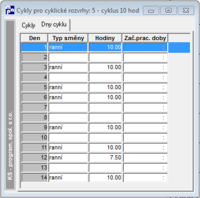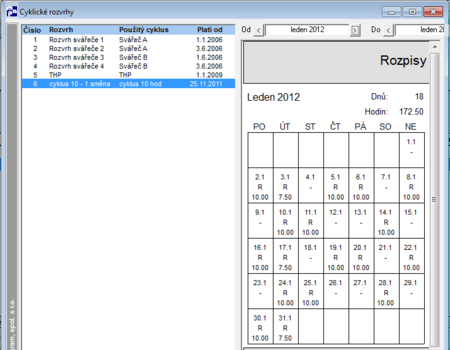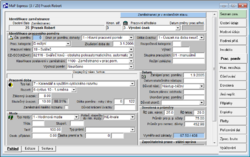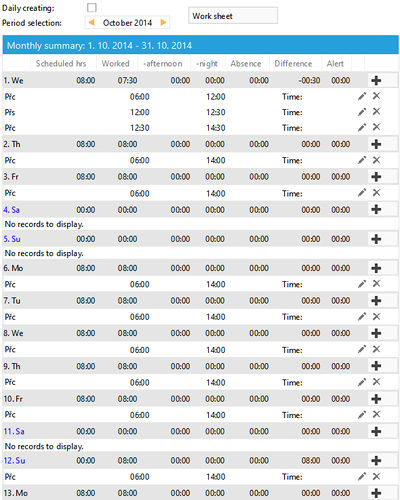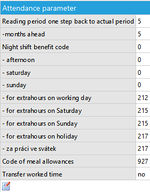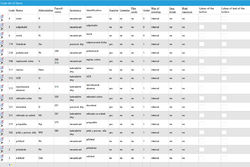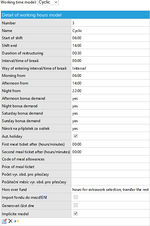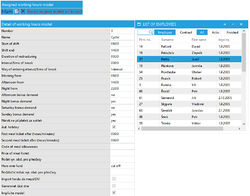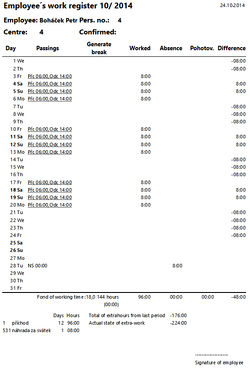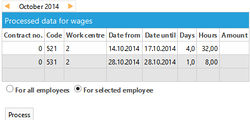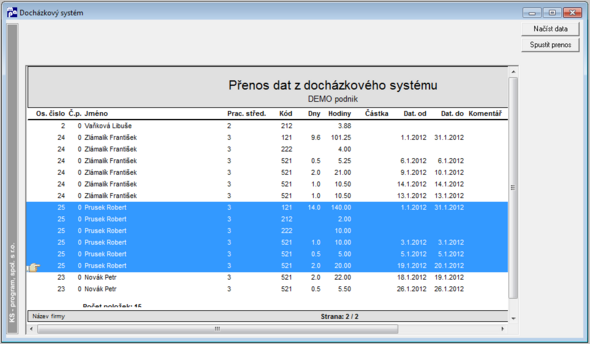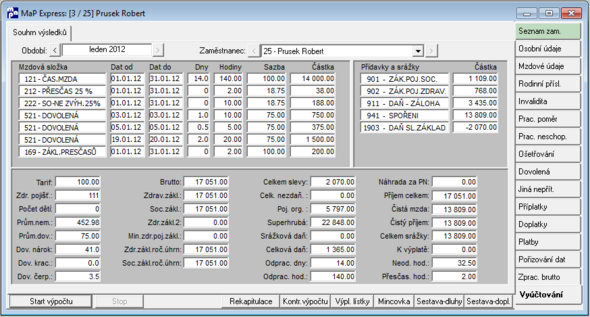Portal-Attendance-Cyclic Calendar
There is the example of taking the attendance of employee who whorks on the cyclic calendar. Moreover, the calendar does not keep the same length of the shift for all days of the cycle and the user has the entitlement for the cashing of the leave by the avarage length of the shift which is determined by the user himself (in that case 10 hours). Since the hours of the vacation (leave) will be changed during the recording of the data compared to the planned hours of the cyclic calendar, It is not possible to do the automatic grossing - up (The hours of the basic wage would not be correct) but it is necassary to import also the worked hours (especially hours) from the attendance.
The pictures are given down below the text in the same order.
1/ Cycle for the cyclic shedule. It is obvious that the same length of the shift is not kept.
2/ Cyclic Shedule. The sheduling of the shifts for the year 2012/01 is visible.
3/ Employment Contract
- The real employment (job) is set on the 10 hours (this is the avarage length of the shift for cashing the leave set by the employee). If the avarage lenth of the shift would not be set like that, the days of the leave would not be generated in a right way if the reports imported from the attendance are taken into account.
- Basic wage imported from the attendance will be generated as a code 111, 112, 121 or 122 by the system according to the type of the working category and the type of the wage.
- Calendar The type of the calendar and the concrete shedule are filled in the standard application in the „Employment“ agenda. Portal then can identify concrete sheduling of the shifts for single days.
4/ Entering the attendance into the portal
- D, D5 - Only the code is entered by the choice from the codes
- D-h - Hours are entered (due to the requirement for reporting a different number of hours for cashing the leave from the number of planned hours of the day).
- P+, S-N - the user enters the hours.
If the user enters the code on some day he has to fill in all day manuály ( for example worked hours). He can use the button for the rest of the days, which will automatically fil in the attendance (it will fill in theworked hours for the planned working days and hours – the planned days and hours are actually the days and hours of the cyclic calendar in the standard applicatin, in the „employment“ agenda).
5/ Parametres of the attendance
transmit the worked hours“ is set = „yes“
6/ The dial of the attendance codes
Some codes in the picture are repeated:
- | - worked hours
- D - holiday
- D5- a half – day of holiday
- D-h - entering the vacation (holiday) with the entering of the number of hours
- P+ - overtimes
- S-N - hours of the bonus for working on Satturday and Sunday
7/ Model of the working hours
8/ Assignment of the model of the working hours to employees
Assignment of the model of the working hours to the employees: The assignment of the model of the working hours to the employees is possible to do collectively for the chosen groups of employees – with help of the SQL instruction ("KS – program" will prepare it)
9/ Working sheet of the employee
10/ Report: Recapitulation of the attendance
11/ Report: Recapitulation of the attendance per days
12/ Report: recapitulation of the attendance per days – including the hours
13/ Processing of the data for the wages
The elaborated data for an employee (in the picture) or for all of the employees.
14/ Import of the data from the attendance
It is necessary to do the loading of the data from the attendance and saving them for the payroll elaboration in the standard application.
15/ Calculation
Calculation of the employee´s wage in the standard application.
Pictures
